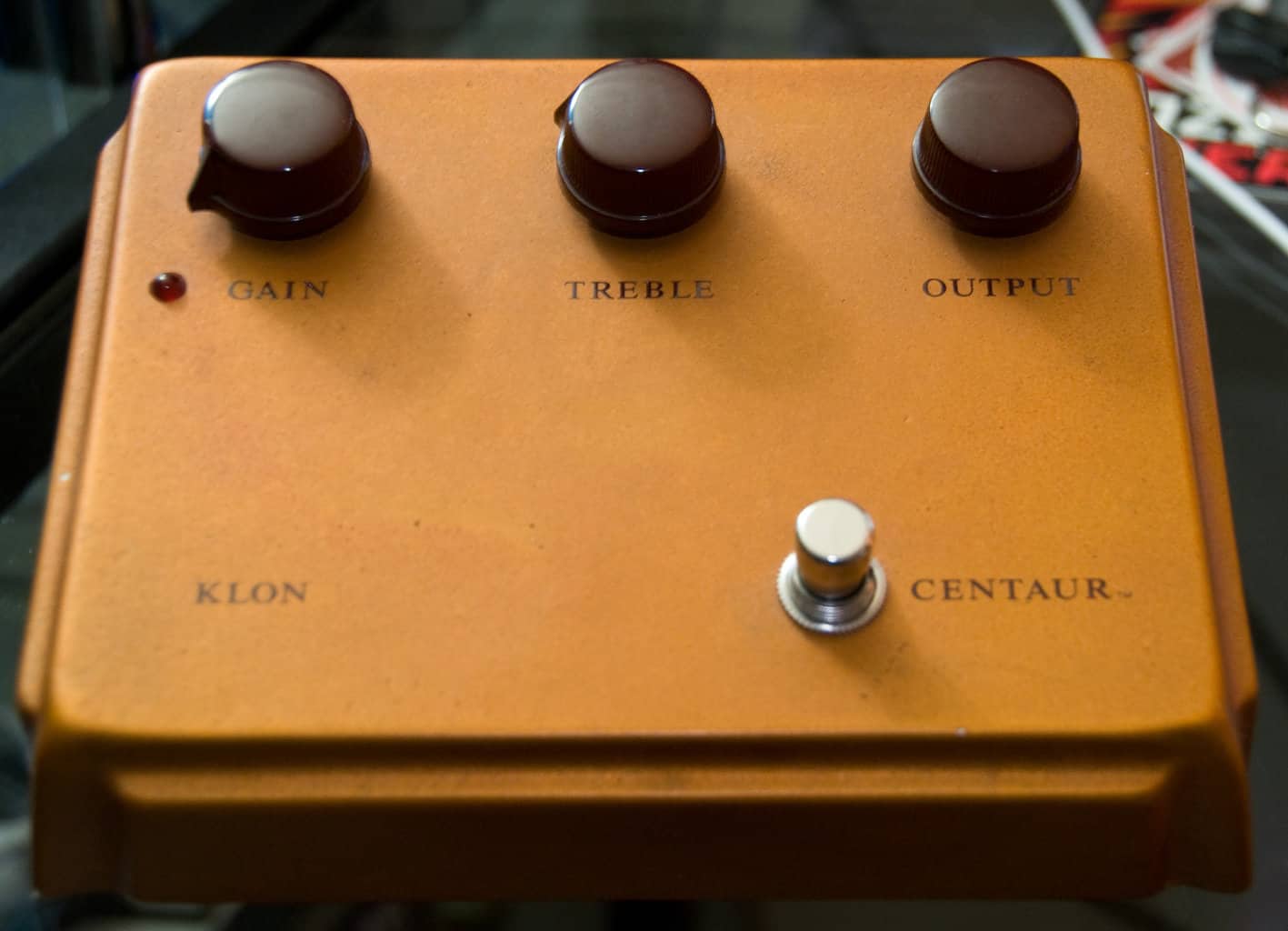In the guitar world, there are many legendary things.
One of these legends undoubtedly is the Klon Centaur.
A mythological beast, nonetheless, contained in a golden box. The thing is almost poetic, you see.
But what’s all the fuzz (no pun intended) about it?
And why is it so expensive?
Well, here is a quick answer about what drove the price of the Klon Centaur that high:
The original Klon Centaur was introduced in 1994 and discontinued in 2000. There’s an estimate of 8000 units in the market. This small number of units available, and the hype behind the pedal due to high-profile players such as Jeff Beck, Nels Cline, and John Mayer using it is what drives its price up.
For those who want to stick with me for a bit longer, in this article, I will talk about what makes the Klon Centaur such a desired piece of gear.
After that, I will give you my take on the economics of pedals and gear in general.
Finally, we will discuss if the Klon is worth it, and what are some nice alternatives to it.
Are you ready to get started?
Let’s go!
The Klon Centaur is a legendary pedal
The Klon was originally launched in 1994 which might surprise you because is not that long ago.
At least in terms of legendary pieces of gear, when most of them can be dated back to the 50s or 60s.
The production lasted until it was discontinued in 2000, and the number of ponies (as many players call it) is considered to be around 8000.
In terms of tone, the Klon is a mild and very transparent overdrive.
A kind of effect that could even be used as a booster.
Its popularity began to grow when artists like Jeff Beck began using it as their go-to choice in many tours.
People like John Mayer, Nels Cline, Joe Perry, and Matt Schofield are all well-known users of this beast.
And as you might know, particularly when Mayer touches anything, it becomes gold to the player base.
But I’m not implying here that the pedal is not as good, in fact, I think it is an amazing piece of gear and a sound that shaped the tone of many modern players.
It became a reference among manufacturers and musicians.
It’s not uncommon to label overdrives nowadays, with regard to their sound, as more of a tube screamer or a Klon, for instance.
And when a product achieves that kind of generic fame, you know the demand is there.
The thing is, for many of us, that lately, the prices of this very sought-after pedal have skyrocketed.
I’m even afraid of writing down its current average aftermarket price here since it will likely become out of date very quickly.
You can, however, satiate your curiosity by looking it up on reverb.
Here is a great video from Tyler Larson about his experience getting a Klon:
Pedal economics
But why has the Klon become such an expensive pedal with the years?
Is it reasonable?
Well, the free-market economist in me is happy to say “yes, it is”.
It’s just supply and demand, and supply is fixed since no new units (I’m talking about the original pedal here) are being made.
As demand grows, owners of this pedal know that they have the bargaining power in this market. They own the precious Centaur.
You can’t afford it?
That’s a shame. Here are 20 millionaire collectors that can.
Is it fair?
I think so.
At least, up to this point in history, there is no economic system more egalitarian than capitalism.
The thing here is getting to discern price from value.
Does the Klon sound that many times better than any other regular overdrive pedal?
Let’s discuss that.
Should you get a Klon for that price?
Short answer: No. There is no real reason to get a pedal this expensive unless money is not a limiting factor for you.
Of course, if you are a collector or a speculator, and think prices will keep going up, my advice is not for you.
Expectations matter.
However, if you are a player just looking to dial down the tone you have in your head, and can’t seem to find the answer to achieving it, I can assure you a Klon isn’t it.
Your problem might lie somewhere else.
It’s clear that the Klon doesn’t sound that many times better, as it’s priced, than any of the more affordable alternatives in the market.
But supposing it actually is the holy grail of overdrives, and it’s the best sounding of them all, even in this case you are getting diminishing returns from your money.
A $150 overdrive pedal will most likely be 90% (if not more) as good as the original thing in this imaginary scenario.
And, of course, as with every other popular thing, the market has worked to meet the demand with more affordable and readily available alternatives.
More affordable alternatives to the Klon Centaur
Getting an original Klon is out of the question for many of us, at the moment. But this doesn’t mean we can’t experience, at least to some extent, that mythical tone at home.
Here are my top picks for alternatives to the Klon Centaur:
- Buffalo Audio White Pony (A sentimental pick)
- Wampler Tumnus
- MXR Sugar Drive
- Ceriatone Centura
- Way Huge Conspiracy Theory
And here is an amazing (and hour-long) test of many of these alternatives made by the guys from Andertons:

Hello there, my name is Ramiro and I’ve been playing guitar for almost 20 years. I’m obsessed with everything gear-related and I thought it might be worth sharing it. From guitars, pedals, amps, and synths to studio gear and production tips, I hope you find what I post here useful, and I’ll try my best to keep it entertaining also.





